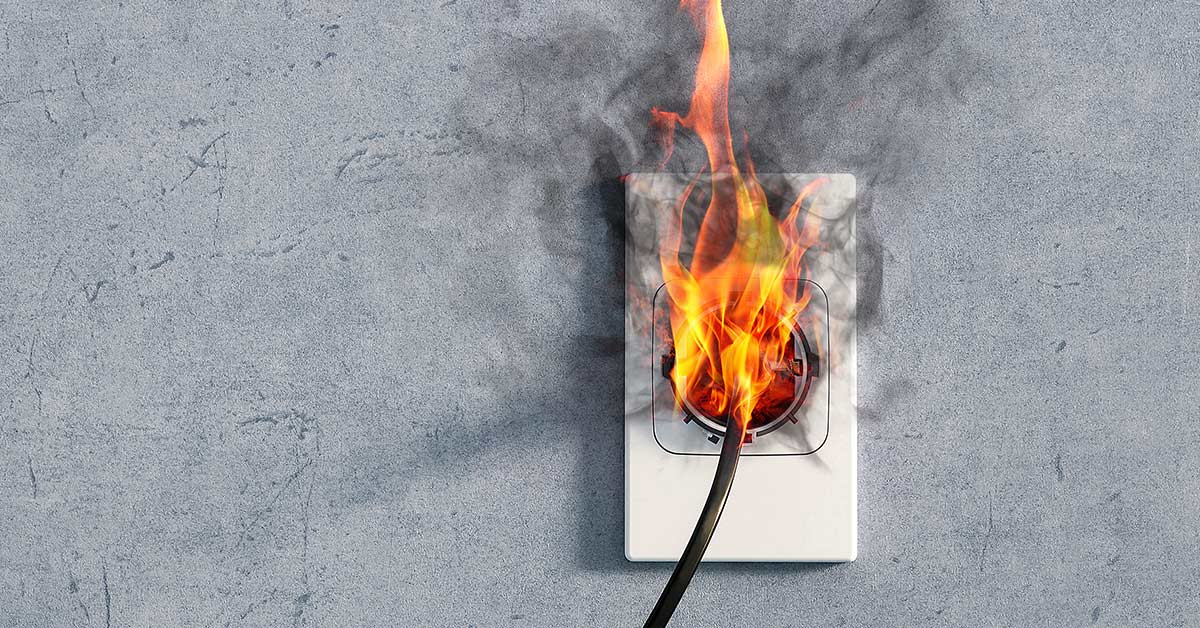Remember when fire departments warned parents not to let their kids charge their phones or tablets on their bed or under their pillow? Well, the firefighter warning about fire safety tips we’re sharing with you today is arguably more important – it’s about something we either always ignore or never think of…
Ignorance may be bliss but when it comes to your home, house fire prevention is something you need to know. Can you even imagine losing your home? A house fire is a homeowner’s worst nightmare. Despite being brought up with knowledge of and tips about fire prevention, most house fires still start because of the smallest things.
Top 10 Most Common Causes of House Fires
According to Real Insurance, almost all home fires can be traced back to one of these factors.
- Cooking equipment (e.g., leaving pots or pans to overheat on the stove)
- Heating (e.g., leaving portable heaters or furnaces on near clothes, furniture, and curtains)
- Smoking in bedrooms
- Electrical equipment (e.g., appliances that have frayed cords or are plugged into overloaded extension cords or wall outlets)
- Candles (keep them away from curtains, tissue boxes, books, and other similar household items)
- Curious children (if there are any open flames, make sure to keep them and matches or lighters out of reach of children)
- Faulty wiring (you may have hazardous wiring if lights dim when you use other appliances or you have to disconnect one to use another)
- Barbeques (cook with them away from tablecloths, garbage or recycling bins, and plants or tree branches)
- Flammable liquids (keep things such as kerosene or petrol away from heat sources)
- Lighting (be sure to use safe bulbs and lampshades that don’t overheat)
We may sound like a broken record because, yes, many of you know a lot of that information already. However, there is one spot in your house that firefighters are calling a “death trap,” which is a place, structure, or vehicle that is potentially dangerous.
Just last year, 550,000 dishwashers were recalled due to fire hazards (one of which could be in your home if it was made between September 2012 and January 2015). While that issue had to do with a faulty power cord, the issue we are warning readers about today has to do with clothes dryers.
How Clothes Dryers Can Start Home Fires
One tiny, lazy habit could be putting the safety of your family at risk. How many times have you either forgotten or refused to clean the lint trap after finishing multiple loads of laundry? Even though we’re the ones at fault, somehow, we are always blown away by how much lint builds up over the course of your clothes drying.
If you do not regularly clean out your lint trap, the risk of a house fire occurring increases massively. As your drying machine goes through its cycle, it goes from comfortably warm to quite hot. At a certain point, if all that lint, dust or debris is sitting in the trap or dryer vents, it’s like kindling for a campfire and can easily burst into flames.
Home Clothes Dryer Fires: Facts
Although our clothes dryers may not be the first appliance that comes to mind when we think of house fires, the U.S. Fire Administration has a few facts that everyone should see.
- Home clothes dryer fires occur in the fall and winter months, and peak in January
- At 34%, failure to clean the dryer (especially lint traps) is the leading cause of home clothes dryer fires
- Each year, people report 2,900 home clothes dryer fires
- Out of the 2,900 of them, they cause an average of 5 deaths, 100 injuries, and $35 million in property loss
11 Home Clothes Dryer Fire Safety Tips
It’s such a simple task, yet so many people either forget or refuse to clean their lint traps. So, here are some fire prevention tips you should try and remember the next time you do laundry.
- Make sure to use the correct electrical plug and outlet and that it’s properly connected (see your dryer’s manual for this specific information)
- Before and after each load, clean the lint filter
- Every six months, clean the lint filter with a nylon brush
- Every three months, clean any trapped lint out of the dryer vents
- Make sure the vents behind the dryer are not damaged or restricted
- If you have coiled-wire foil or plastic venting, try to replace it with a non-rubbed metal duct
- Keep your dryer area clear of any household items that can burn
- If you go away for a few days or more, unplug/disconnect the dryer as a preventative measure
- Don’t overload the clothes dryer
- Don’t leave the clothes dryer running if you’re asleep or out of your home
- Every year, if possible, have a professional come by to make sure everything is still a-okay with your clothes dryer
Thankfully, home fires are avoidable and with a little bit of extra work, you can live with the wonderful comfort of knowing you’re doing all that you can do to keep your family safe. We hope you found this fire safety article helpful and, if you did, feel free to send these fire prevention tips to your friends and family. Together, we can help prevent the terrible tragedy of house fires.
Keep Reading: Firefighters Want Everyone To Know What They Should Never Plug Into A Power Strip
Sources
- “The Most Common Causes of House Fires.” Real Insurance.
- “Clothes dryer fire safety outreach materials.” USFA

